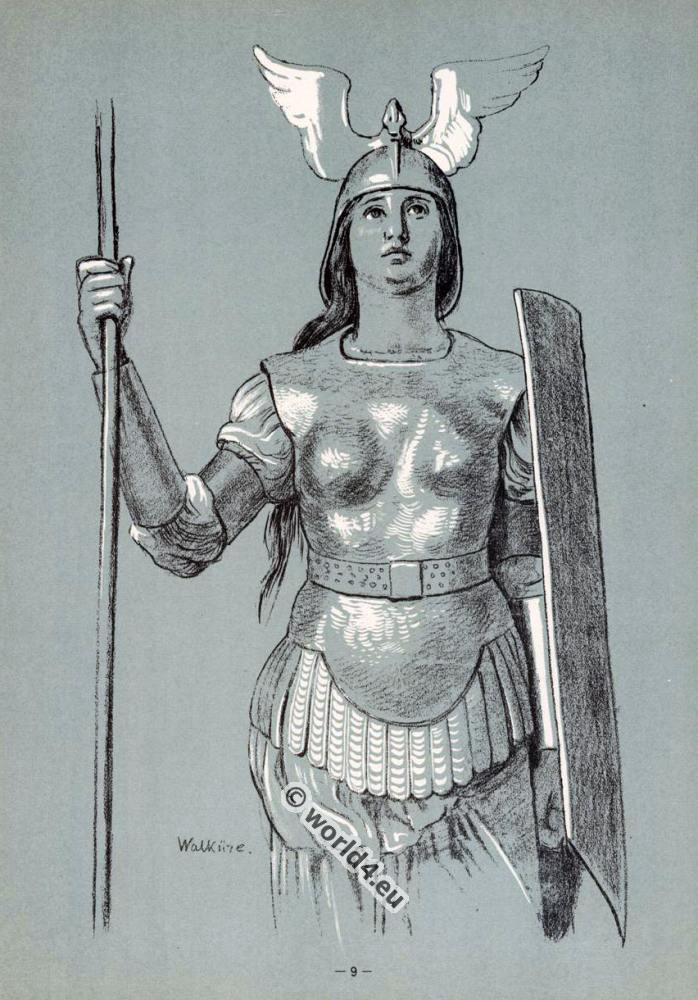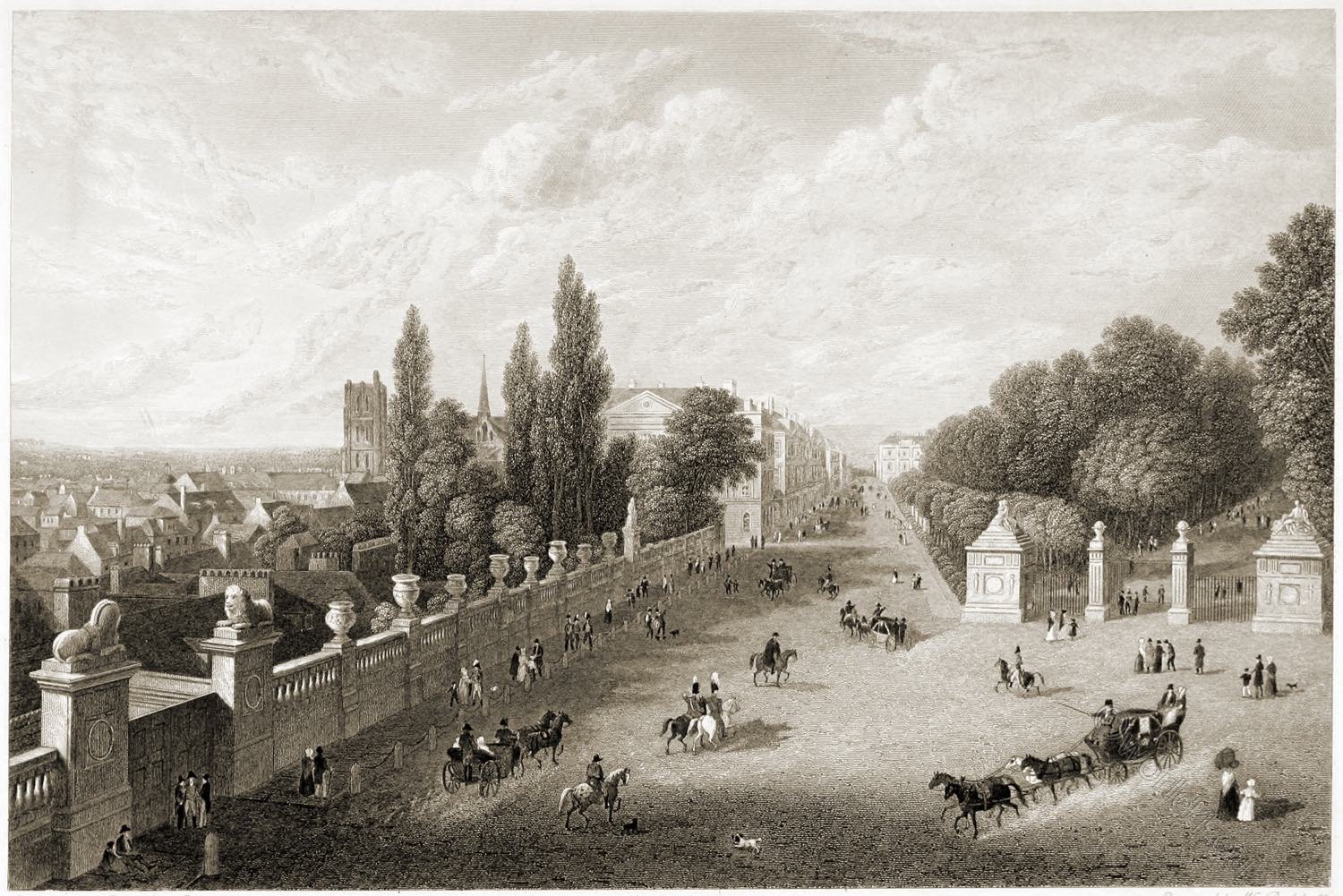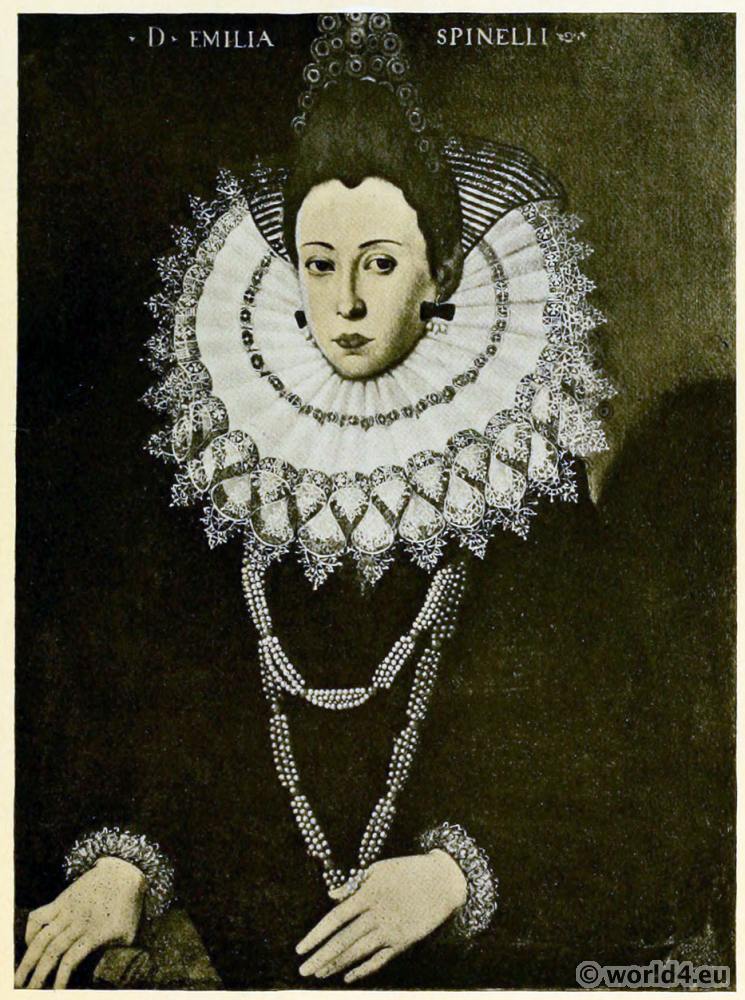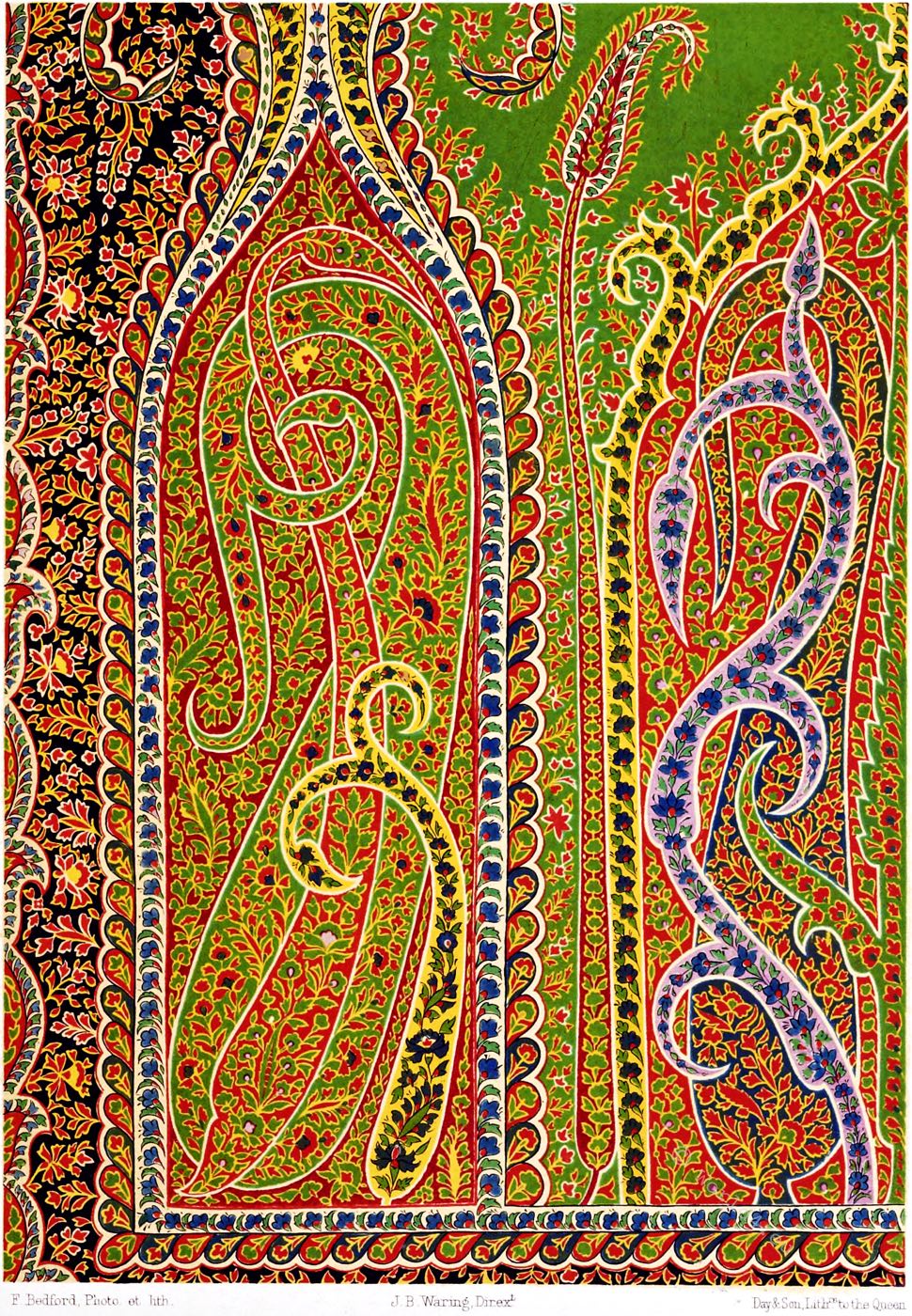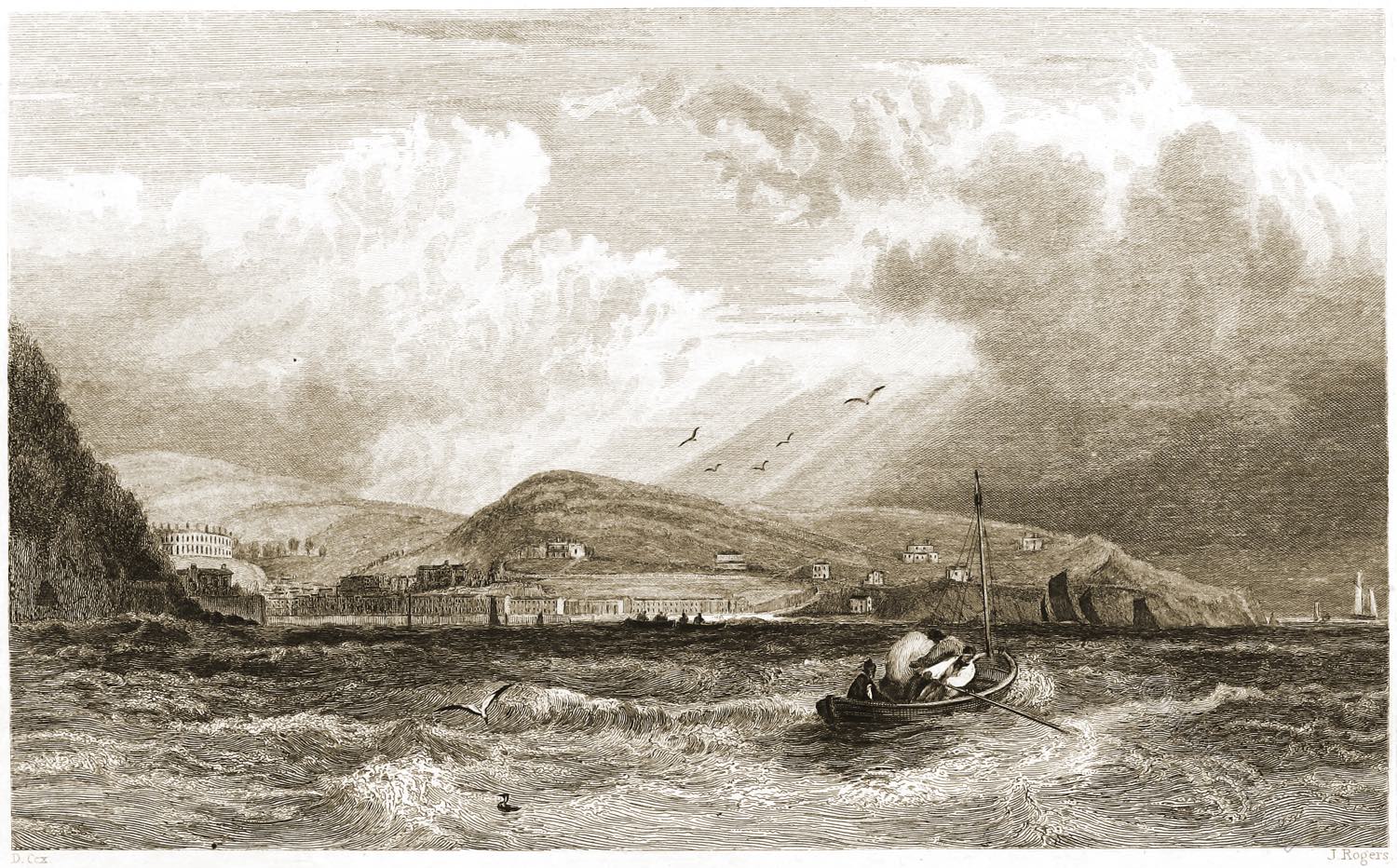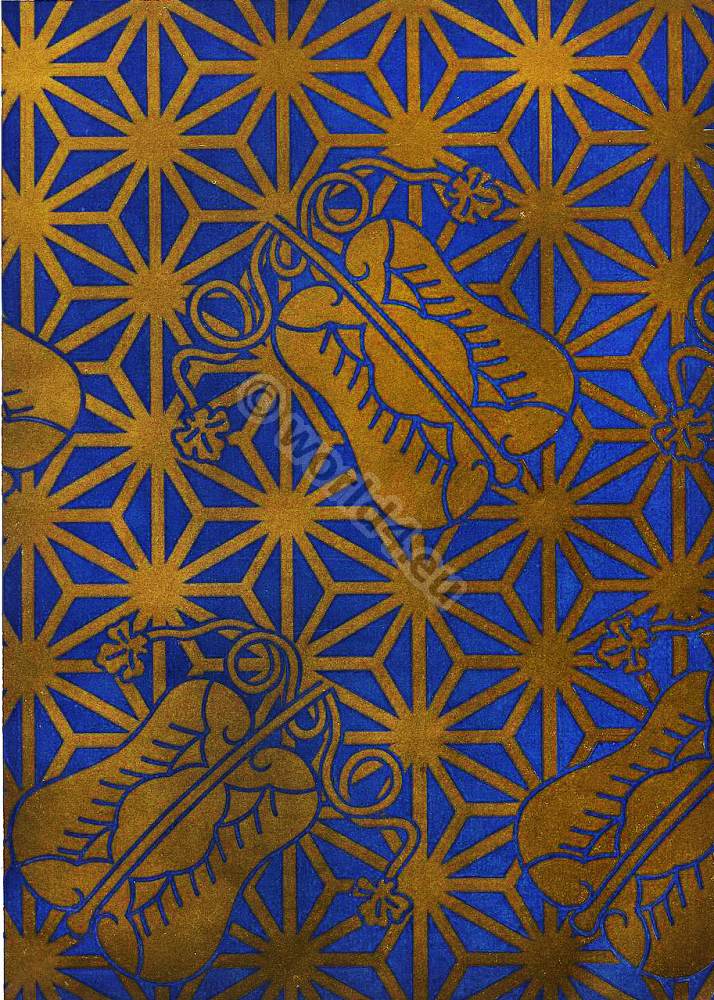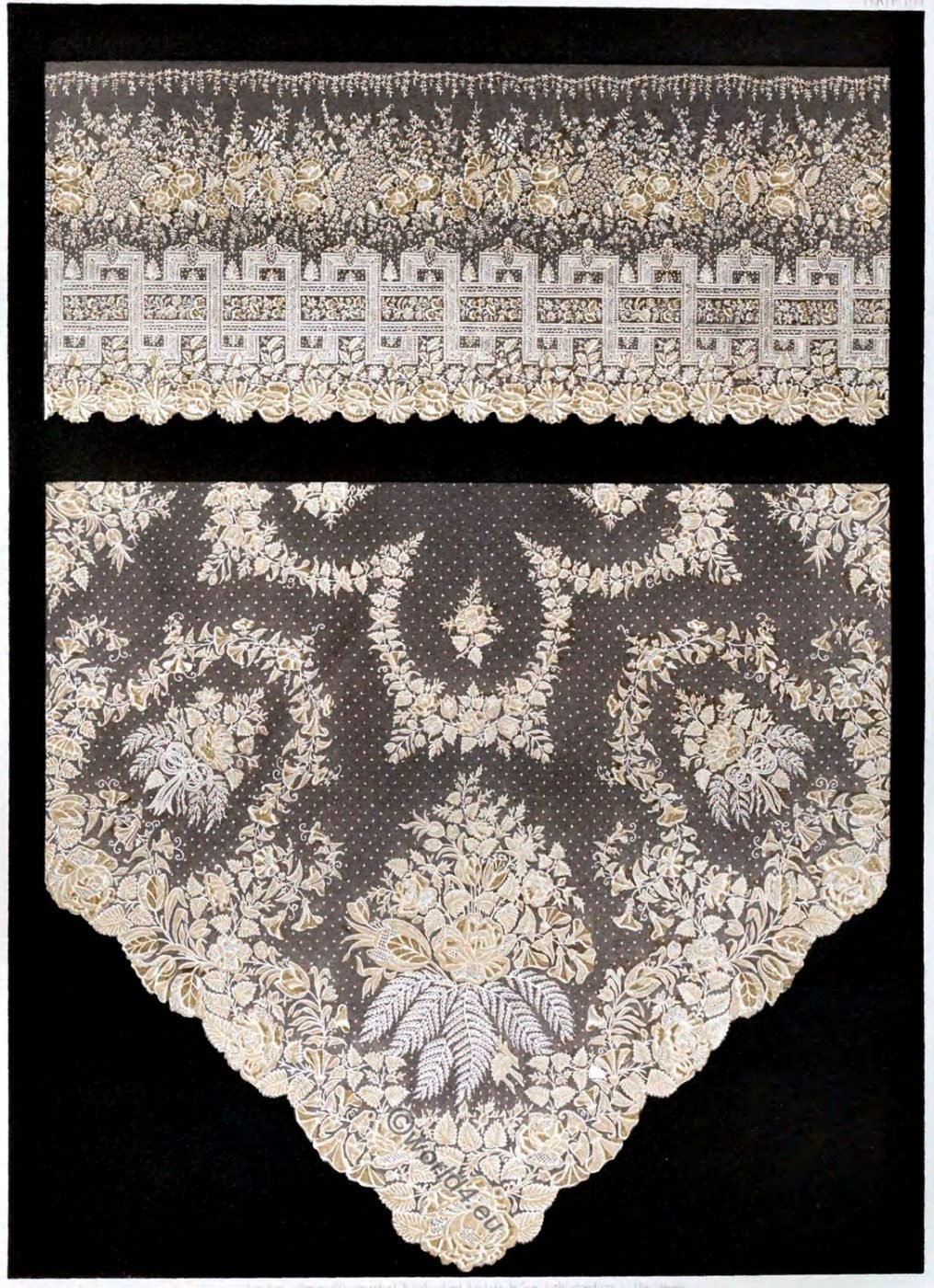
The best Brussels lace is noted for its extraordinary fineness and beauty of design. It is made of flax grown in the neighborhood of Hal and Rebeeque, and is classed usually under two heads; viz. Brussels plait, and point. The point lace is made entirely with the needle, and the plait on a pillow, resembling Honiton lace in character. In former days, when Mechlin and Brussels lace was left as an heirloom from mother to daughter, the manufacture was confined to lace made of the very finest flax obtainable, the ground being real or pillow lace made in narrow strips of from one to three inches wide, which were afterwards fine-joined, so as to render the junction imperceptible.
This minute work was naturally very costly, and trimming-lace four inches in width often cost ten guineas 1) a yard, and veils from twenty-five to a hundred guineas each. Of late years the beautiful net produced by machinery at Nottingham has been largely used as a ground, on which the flowers or designs made by hand are sewn: this is known as Brussels “appliqué,” and its resemblance to the old point is so great as frequently to deceive the best judges. This kind, owing to its moderate cost in comparison with the old point lace, has found a great demand, in England especially.
The makers of Brussels lace are divided into special classes:-
- those “who make the flowers, &e., in plait;
- in point;
- the real ground;
- the ground of the flowers;
- the attacheuses (fasteners);
- those who apply on the net;
- those who work the point, and the new kind of real Brussels “gase point.”
With the exception of point d’Alençon, made in the north of France, Brussels produces the most valuable lace known.
Mechlin lace is made at Mechlin and Antwerp; it is all made in one piece on the pillow, and its peculiarity consists in a plait thread surrounding the outlines of the flowers and designs, so as to give an appearance of embroidery. Valenciennes lace, since 1835, is mostly made at Ypres, which town, however, produces also the lace known as Ypres, made on the finest square ground of unusual size; it is estimated that over 20,000 workpeople in and around Ypres are employed in lace-making. Bruges, Menin, Grammont, Ghent, and Alost are also famous for their laces. As regards the designs of lace-work, Mr. Birkin, from whose report in 1851 we have condensed the above notice, states, in 1862, that “the Belgian artists understand both how to produce beautiful and effective designs, and to adapt them to the special sort of lace articles for which they are intended, besides knowing how they should economically and effectively be carried out; considerations not understood, or mostly lost sight of, by some designers. Notwithstanding the fame that Belgian lace manufacturers have obtained for the rich and artistic products formerly exhibited, the numerous valuable and intrinsically good articles now exposed, for style, taste, and exquisite work, surpass those of all previous exhibitions.”
The manufacture of point lace, which indeed is in some respects only a fine kind of embroidery, is of unknown origin, but is, doubtless, of great antiquity. In the 16th century, Genoa, Venice, and Spain were celebrated for their productions in point lace, which were much in vogue with the wealthy, and used also for ecclesiastical purposes; its costliness, however, led to the gradual adoption of pillow lace, the invention of which has been ascribed by Beckmann to Barbara Uttmann, of St. Annaberg, in Saxony, about the year 1561. He states that the Saxon annalists are unanimous in naming her the inventress of this art. If such is the case, it is remarkable that Germany has never been particularly celebrated for its pillow lace, the most valuable specimens of which were manufactured in Flanders in the second half of the 16th and during the 17th century. Beckmann says that, in the account given of the establishment in France of the lace manufacture under Colbert in 1666, no mention is made but of points, but if the making of pillow lace was not uucommon in England in the year 1613, when Shakespeare wrote his “Twelfth Night,” in which he describes the process – and was certainly practiced both in Devon and Buckinghamshire in the years 1617 and 1024 – it is highly improbable that the art should not have been introduced into France from Flanders before the second half of the century. Flemish lace has always sustained its high reputation, and entered largely in the costume of the beaux and belles of the 18th century in this country.
1) Guinea, abbreviated 1g / 1gn; plural: 3gs / 3gns) was a British gold coin in circulation from 1663 to 1816, which was the first to be produced mechanically. The coin was named after the gold-rich region of Guinea, from which much of the gold used for.
Source: Masterpieces of industrial art & sculpture at the International exhibition, 1862 by John Burley Waring. London, Day & son, 1863.
Related
Discover more from World4 Costume Culture History
Subscribe to get the latest posts sent to your email.

